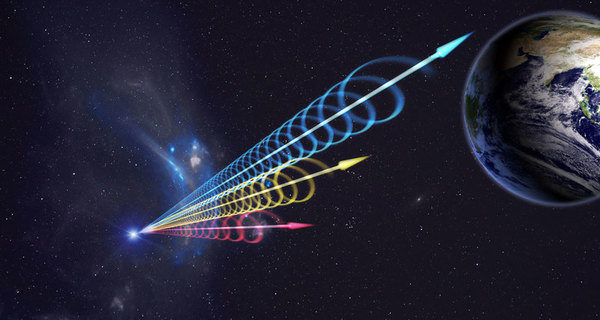The mystery of the unusual signals from deep space

2018-01-12 11:27
The mystery of the unusual signals from deep space
Fast radio bursts (FRB) for many years has puzzled astrophysicists, but a new study may help to unravel the secret of the mysterious signals detected in the Universe.

Sign up for news “UkrMedia” in Facebook, Twitter or Google+
Researchers around the world for 6 years trying to establish the nature of anomalous fast radio bursts, which are generated by a mysterious object in a distant galaxy, reports Rus.Media.
In the dwarf galaxy, located at a distance of 3 billion light years from us, something happens. Fast radio bursts (FRB) for many years has puzzled astrophysicists, but a new study may help to unravel the secret of the mysterious signals detected in the Universe.
The study, published in Nature and presented at the 231st meeting of the American astronomical society, the consortium of international researchers working with the telescopes around the world, came as close as possible to the explanation for why the only known fast the burst is repeated so regularly. FRB is a strong radio signals that last only a fraction of a second, which was first discovered in 2012. Since then, astronomers have struggled trying to find an explanation for what could cause such short-term, high-energy phenomenon.
Then they found FRB 121102.
Mysterious signals
FRB 121102 is an emitter of fast radio bursts, and different from all other analogues. Many FRB, apparently, is disposable, but this signal is repeated with a certain periodicity. This has created ideal conditions for research that helped to narrow down and carefully study each signal.
The prevailing theory is that a neutron star — the core of a huge star that survived the supernova explosion create such bursts. Judging by the duration and strength of signal, its source diameter is only 10 km, which coincides with the radius of the neutron star. Someone similar numbers in the scale space may seem small, but keep in mind that this is a fantastically heavy object where all the mass of a star compressed to the size of a small neighborhood. This area is permeated with a strongly magnetized hot gas, which is often observed near black holes and could be the catalyst radiation. It should be noted, however, that this is only a working hypothesis.
Many neutron stars become pulsars — they begin to rotate with great speed and emitting strong radiation. Researchers believe that FRB 121102 may be young neutron star, locked in a cloud of dust and gas left over from previous supernova explosion. It could be a “breeding ground” for fast radio bursts as the star interacts with the dust.
Conclusion
However, not all this theory is so smooth. Pulsars usually emit waves like a metronome with a regular frequency, but FRB 121102 does it though from time to time but not on a regular basis. For example, 4 hours of observations, astronomers were unable to detect any burst, but at the fifth hour, there were already 18!











